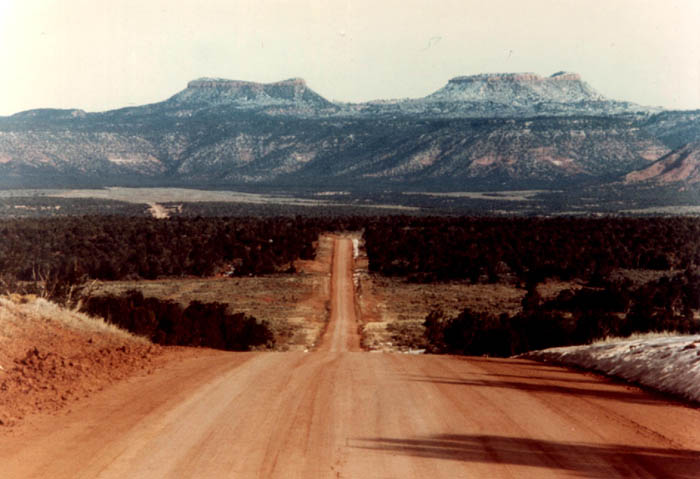
Within hours of his inauguration, President Joe Biden started the process to restore the original boundaries of Bears Ears National Monument. Here we go again.
This publication has written tens of thousands of words on the controversy since the idea of a Bears Ears monument first arose several years ago. A fraction of the information that we offered to our readers ever made it into the mainstream media. In 2021, it doesn’t surprise me at all.
We don’t plan on getting back into this nightmare again, to any great extent. We’ve said in the last four years what needed to be said. What I plan to do here is simply include links to many of those past Zephyr stories, because they’re just as accurate now, and just as relevant, as they were when we wrote them. If you are really interested in the history of the monument, and how we got from there to here, take the time to read the links…
But just briefly, here is a Bears Ears timeline:
Summer 2016. The Obama administration moves forward, in a presidential election year, with public hearings for a proposed 1.6 million acre Bears Ears NM.
November 7: It’s assumed that Hillary Clinton will easily win and that consequently, the monument is a done deal.
November 8: Trump wins.
December 28, 2016: Knowing with absolute certainty that a Trump administration will either rescind or reduce the monument, President Obama creates Bears Ears NM anyway. What followed over the next four years were some of the most acrimonious, toxic public land debates that I have encountered in the forty years I have covered these issues in Southeast Utah. What was the point of it all? As it turned out, the point of it all was indeed…to make a point.
(A year later, Trump dramatically reduces the size of the monument, but protections already in place for all public lands, like the Archaeological Resources Protection Act (ARPA) remain in place. And hundreds of thousands of adjacent public,lands continue to be managed as wilderness–the highest level of protection.)

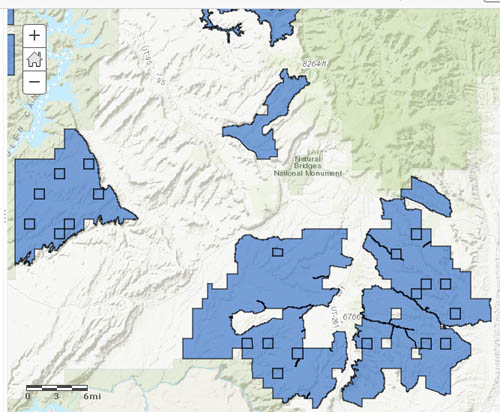

Of all the Zephyr stories about Bears Ears, contributor Stacy Young’s December 2018 article, “Bears Ears Brinkmanship: With Friends Like These, Does Cedar Mesa Need Enemies?” was the most revelatory.
Stacy discovered a remarkable video of a forum held at Johns Hopkins University on April 13, 2018. Its panel included San Juan County commissioner Willie Grayeyes and environmental activist Josh Ewing. But the epiphany that came out of the hour long discussion fell to Tommy Beaudreau, the chief of staff to former Interior Secretary Sally Jewell.
Here is Stacy’s account of the comments…
…about an hour into the presentation, Tommy Beaudreau, Chief-of-Staff of former Interior Secretary Jewell, explains that the decision to launch the monument directly into the current political thresher was done with full knowledge that what has happened would happen.
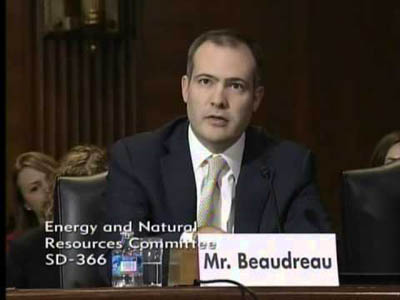
He acknowledges that the administration knew in late 2016 that the monument proclamation would be received as an act of provocation if not a declaration of total war. They knew there was no chance that the monument as designated would be properly funded or any other constructive steps taken toward its implementation. They knew the ensuing controversy would be protracted and the outcome of the fight uncertain. They knew this chain reaction would negatively impact the landscape and its cultural resources. And still they set it in motion.
The obvious question is this: how could anyone make a risk assessment even superficially similar to the one outlined at the top yet reach a completely opposite conclusion about what constitutes a responsible course of action? The answer, it turns out, depends on whether you’re trying to protect a place or a particular interpretation of the Antiquities Act.
This becomes clear during the same segment of the Johns Hopkins presentation, when Beaudreau explains in clear and relatively detailed fashion that what made some sacrifice of Bear Ears tolerable is that it represents the best opportunity to ‘prepare the battlefield’ for a court fight over the limits of the Antiquities Act.
To read Stacy Young’s “Bears Ears Brinkmanship” in full, click here.
In other words, the Obama administration was fully aware that the monument designation would have disastrous environmental and archaeological consequences. They knew it would create unprecedented division and chaos. And they did it anyway. Just as a test. All of those who cared about the area, whether they supported or opposed the monument, were simply part of an experiment. All of us suffered the consequences.
The resource itself, the very reason the monument was allegedly created, suffered the most, as massive national publicity campaigns by the recreation industry and mainstream environmentalists brought thousands of new tourists to southeast Utah.
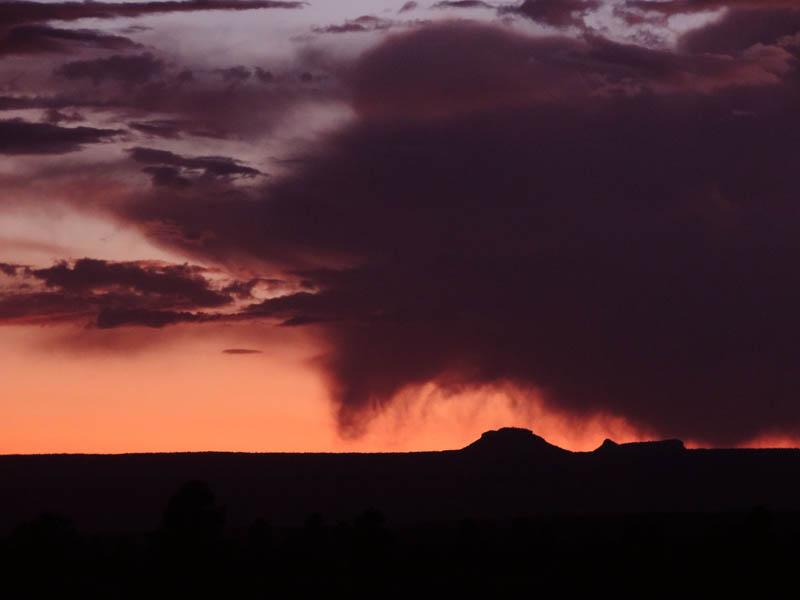
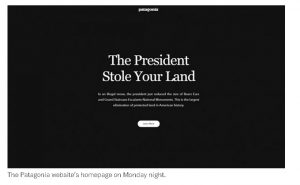
Environmentalists showed little concern for the impacts from Industrial Tourism; after all, many of them depend on generous contributions from corporations like Patagonia and REI. Inc. to fund their many campaigns and meet their growing payrolls.
Instead, their concern was always for the impacts created by the energy industry. They predicted unprecedented land rushes and utter devastation from mining and drilling. But it never happened.
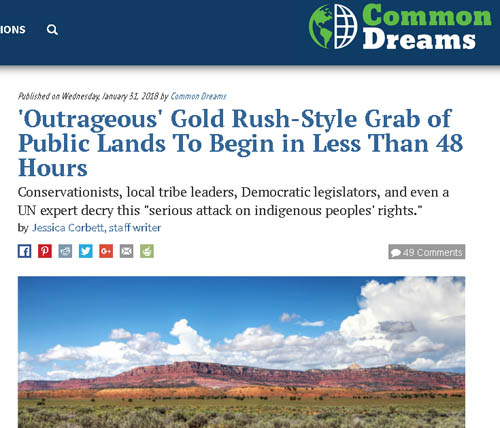
National Geographic noted on the day after Biden’s inauguration that, “So far, they have seen few lasting consequences of Trump’s actions, which were intended to increase access and encourage exploitation of natural resources within the monuments.”
It didn’t happen because everyone knew, even environmentalists, that there were no significant energy reserves in the very places they claimed were at risk from exploitation. Even Mike Popejoy, Utah public lands director at Grand Canyon Trust, told NatG that “no on-the-ground damage on any large scale has been done.”
* * *
In early 2017, just after the monument was designated, I offered an alternative to the monument, a reasonable and rational way to protect the resources of Cedar Mesa. The idea was to offer protection without creating the destructive consequences of a monument designation that has now become little more than a marketing tool for the outdoor recreation industry and mainstream environmental organizations who spend most of their time trying to raise more money for their burgeoning payrolls .
The article offered ways to deal with the concerns and impacts that needed to be mitigated. Congressman John Curtis’s office even took an interest in some of the suggestions, but ultimately they were ignored by both sides. To embrace them would have required some compromise.
But again, if you are truly interested in understanding the story of Bears Ears, please take the ten minutes you’ll need to read this story:
AND FINALLY…
Though I think the “Bears Ears Alternative” could have effectively provided the kind of resource protection that was needed, while avoiding the pitfalls of Industrial Recreation, its time has come and gone. It could have been different, but the world has changed in four years. Most of San Juan County’s residents insist that they “don’t want to be the next Moab.” But that future is already happening. We even reported the changes in 2018.
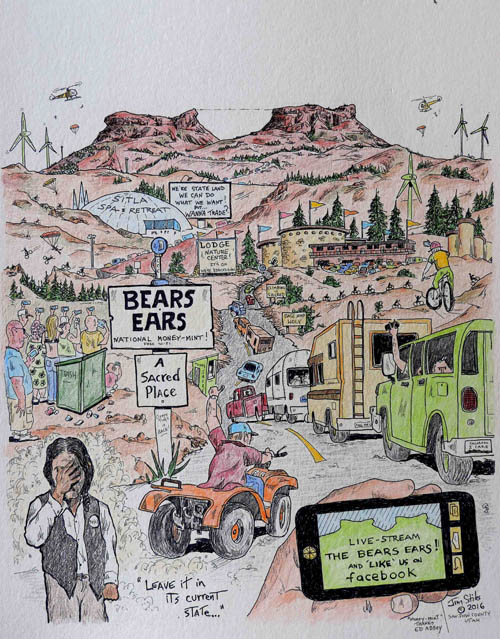
It may take a decade. It may take two. But sooner or later, we’re all going to be “the next Moab.” Good luck to us all.
Jim Stiles is Founding Publisher and Senior Editor of the Canyon Country Zephyr.
Click Here to See a Full Bibliography of the Zephyr’s Bears Ears Coverage since 2016…
To comment, scroll to the bottom of the page.
Zephyr Policy: REAL NAMES ONLY on Comments!
Don’t forget the Zephyr ads! All links are hot!




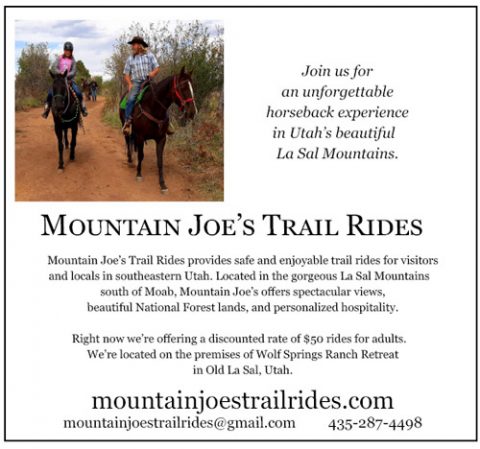

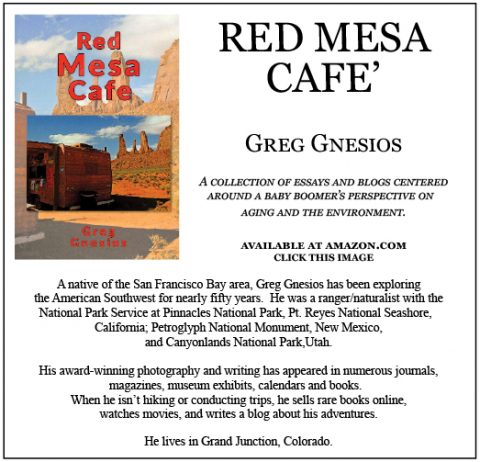
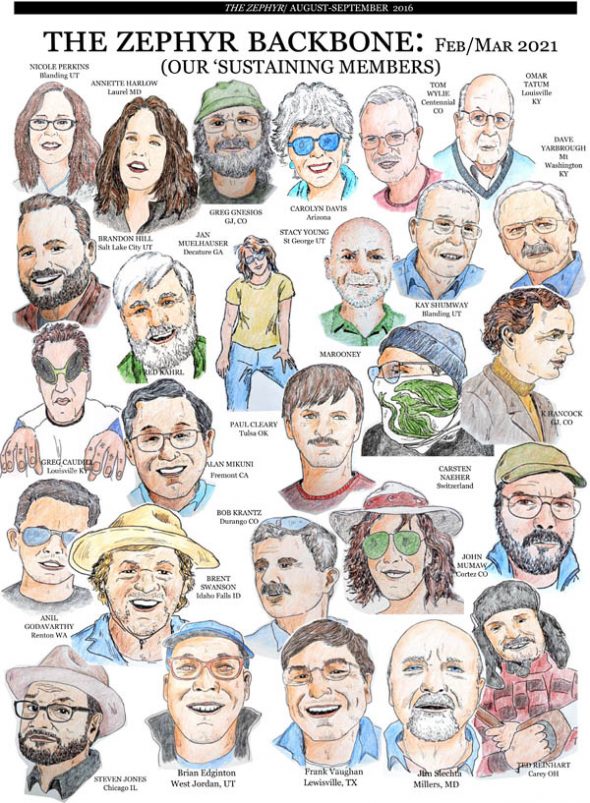
A personal reflection. A small group of us have been visiting what had been remote BLM land for quite a few years, it was vacant, of no importance, it didn’t have a snazzy label to attract. No tracks and beautiful. Then Bears Ears happens and we see a huge incursion of folks, whom I can’t fault it is a neat place. Then it gets whittled down and even more people show up, “before it’s destroyed” – nice ring to it. Sad to see these lands used as legal fodder by folks who from all accounts don’t really give a damn about what’s truly needed. I like run of the mill BLM land, with special protections as needed, keeps it from being used for raising money or selling stuff.
What’s the definition of good governance – here’s an example from wiki
“there are two dimensions to qualify governance as good or bad: the capacity of the state and the bureaucracy’s autonomy. They both complement, in the sense that when the state is more capable, for instance through the collection of taxes, there should be more autonomy because the bureaucrats are able to conduct things well without being instructed with a lot of details. In less capable states, however, less discretion and more rules setting are desirable.”
Sounds like our governance is less capable, great..
“In other words, the Obama administration was fully aware that the monument designation would have disastrous environmental and archaeological consequences. They knew it would create unprecedented division and chaos. And they did it anyway. Just as a test. All of those who cared about the area, whether they supported or opposed the monument, were simply part of an experiment. All of us suffered the consequences.”
Sounds like what our political leaders–yes, on both sides–and our industrialized, attention-greedy media have done with our government across the board.
Here is my plan to deal with this kind of problem:
Let’s start with reparations to American Indians. How about giving them all federal and state lands touching their reservations, along with all developments and infrastructures, and all surface, subsurface, and water rights, royalties, tax money, grants, and other income for those lands.
They would have absolute control over those lands, including the right to control access to those lands and to renegotiate or terminate all contracts or leases having anything to do with those lands. Federal and state funding for maintenance of infrastructures, such as roads, would continue, but would be under their control. Such funding would not be cut; and when, where, and how the funding would be used would be under their sole discretion.
The Indigenous Nations would be under no obligation to continue any of the current uses of those lands unless they want. If, for example, one wants to maintain a national park or recreation area, all of the money currently going to the park from state or federal taxes would continue, all of the revenues would be theirs, and they would have the authority to change policies and to retain or dismiss current employees.
Though most BLM, USFS, FWS, NPS, and state (including SITLA) lands would be removed from federal and state management, the Indigenous Nations could do no worse and likely would manage the lands better. Some people will object that they would not be able to hike, climb, travel, vacation, or hunt where they want, or graze livestock or mine or drill; however, the Indigenous Nations may still allow such activities at their discretion and under their rules.
Furthermore, tribal police and justice systems would be given superior authority over all federal, state, and county law enforcement and judicial systems on their lands, including over non-tribal members and entities on or entirely within tribal lands.
Likely that Bluff and Blanding would come under Dine’ jurisdiction. Monticello and Moab would come under Greater Ute jurisdiction. Grand County, San Juan County, and other sheriff departments would be eliminated with the possibility some employees would become tribal police after thorough vetting. Moab police would still exist but be subordinate to Ute police.
Based on my limited experience with police, I would trust a Navajo tribal cop over a San Juan County sheriff.
Let’s start the process to eliminate white privilege and imperialism.
Why stop there, Bob? If you’re going to be consistent, and true to your solution, shouldn’t we return the entire North American continent? Why stop at San Juan County? .
Jim: I’m serious about my proposal–though I think it has a snowball’s chance in Hell of actually being done given out political situation. I think to take and return peoples real property (except from perhaps from the very wealthy) would be both unjust and impossible. After all, where would you and I go? We are not personally responsible for the genocidal conquest of the Western Hemisphere, but we are responsible for trying to fix the current greatly unjust circumstances facing Indigenous Americans. And, I do think they would generally do a better job of land management than our current USFS, BLM, SITLA, etc. Oh, I am talking about ALL federal and state lands adjacent to Indian reservations–not just San Juan and Grand counties. Cheers!
Also, what “political situation” would be more amenable to the proposal you have set forth here? Describe it for me. What specific actions would be required by a more receptive Congress and Administration to make your plan become a reality?
You might want to give this a read too, Wobbly Bob:
THE UN-ACKNOWLEDGED NUANCE IN SAN JUAN COUNTY…
https://www.canyoncountryzephyr.com/2019/07/30/the-un-acknowledged-nuance-in-san-juan-county-by-jim-stiles/#comments
Jim, I did read it and agree with the general sentiment, and I don’t think that any ethnic group has inherent superiority over another or that private real property should be taken. However, our state and federal governments are too-often managing public lands for the betterment of corporate America and Industrial Tourism rather than for the health and sustainability of the land and wildlife. While I don’t have any illusions that some land management decisions made by the Tribes might be bad, they will likely do better than our government agencies have and should have the right to make those decisions.
So how would that work, Bob? You state that there are NOT attributes and characteristics inherent in Native Americans that would by Nature make them better stewards of the land. What about being better administrators and managers? In general, what are the qualities and characteristics in Native Americans that would allow you to still make the generalization that “they will likely do better than our government agencies have and should have the right to make those decisions.”
What about the thousands of Native Americans who are (or were) gainfully employed in the energy/fossil fuel industry? Would their work background disqualify them from being managers of public lands in the future? What evidence would Native Americans need to display, in your estimation, to be qualified to do a better job?
Jim:
The “political situation” I refer to is the fact that most of our political leadership (on both sides, but, for ideological reasons, more on the right) would be unwilling to relinquish any of their current political power or control over public lands.
My proposal is that the Tribes would have sovereign autonomous administration over their lands. The reason I think that they likely (not certainly) would do a better job is simply because Congress, state legislatures, corporations, and other non-indigenous outside influences would be reduced or eliminated–essentially establishing “local control” by people who have more of a stake in the land’s health and sustainability than the politicians, bureaucrats, businesses, tourists, etc. in other areas. As to who would be doing the work: that would be left up to the tribal administrations. They could continue to employ current employees or maintain contracts or leases, regardless of ethnicity, if they want, and–just like federal and state service now–previous employment in the fossil fuel or other industries would not exclude employment in management or other positions (indeed, the experience my add to qualifications). As far as “what evidence would Native Americans need to display”, I just know that they aren’t any dumber than we are; besides, our current local, state, and federal political elected and appointed leadership aren’t required to show any qualifications beyond being able to persuade people or get votes. This is not to say that current administrators are bad or unqualified; it is to say that to impose a stricter standard for tribal administration or that you or I should judge their qualifications is wrong. Autonomy means they decide as to whether or not or how they want to assume the responsibilities.
For five centuries, European Americans have been running the show; and though we have done some things well, in too many ways we have not done a very good job.